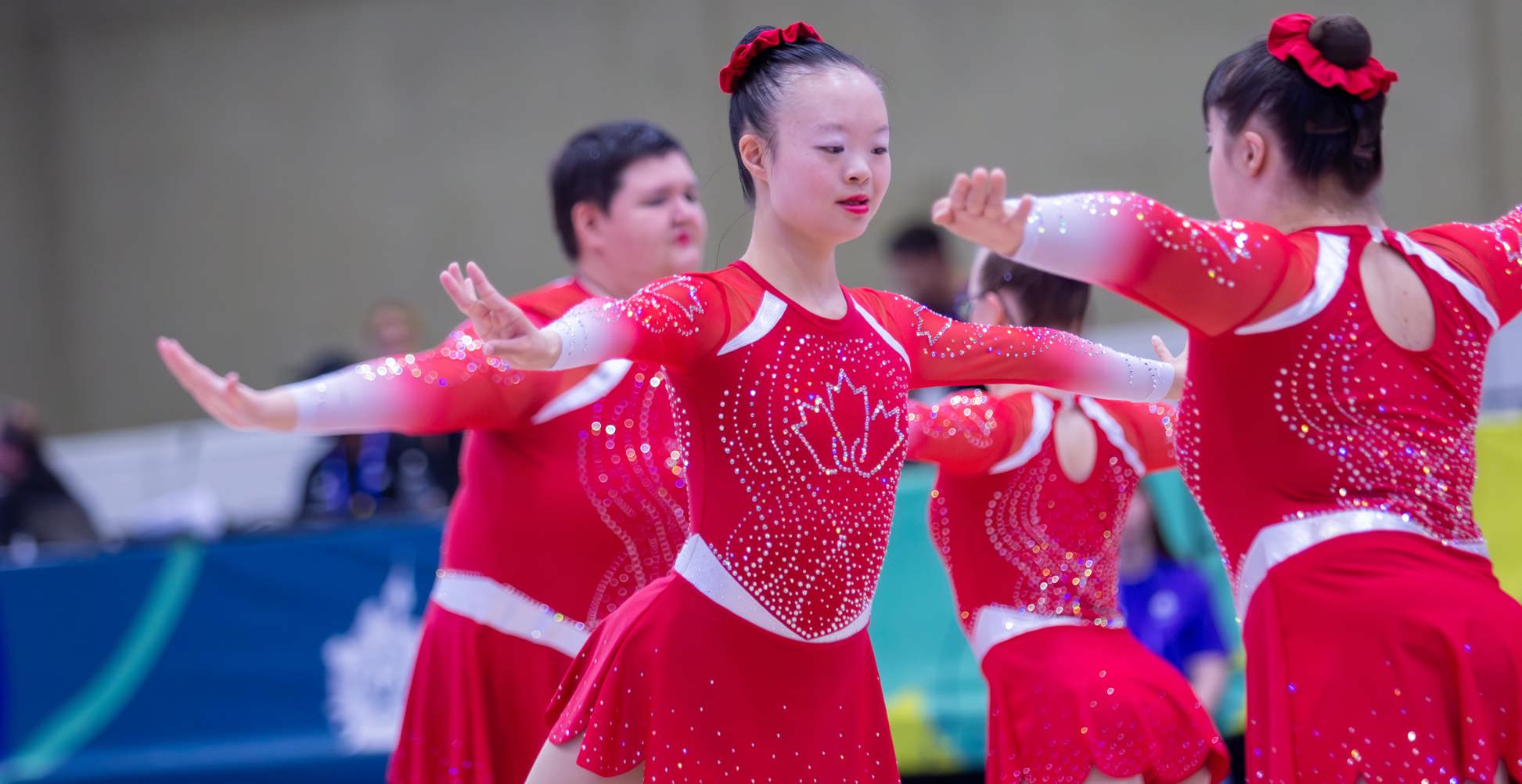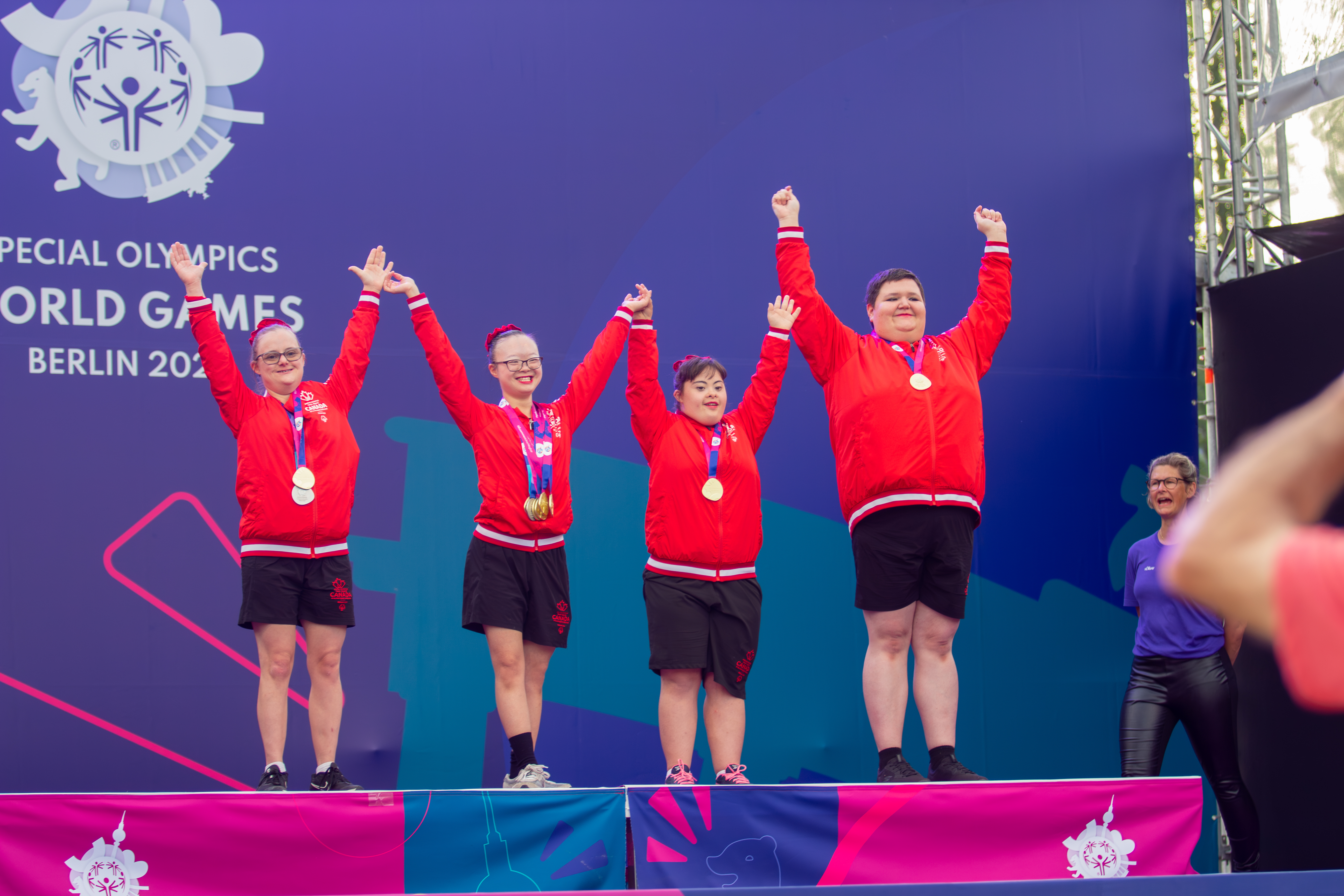Divisioning

What is divisioning and how does it work?
The amazing difference that sets Special Olympics competitions apart from those of other sports organizations is that athletes of all ability levels are encouraged to participate. Competitions are structured so that athletes compete with other athletes of similar ability in equitable divisions. For further information on divisioning, please visit:
Divisioning Process:
Individual Sports
-
1Divide by Gender
-
2Divide by Age (21 and under, 22 to 39, 40 and over) and then AbilityIf there are not enough athletes in an age group to create meaningful competition, age groups may be combined. Proceed on the premise that the recommended performance difference between athletes in a division is 25%.
-
3Divide by Number of AthletesRegistered in an event.
-
 For three or more athletes:Place athletes into division of no less than three, no more than eight. If you have more than eight athletes in a division, reduce the performance percentage to produce new ability groupings – 5% at a time is suggested. For example, an ability group could be reduced to 20% difference in performance to create two ability groupings.
For three or more athletes:Place athletes into division of no less than three, no more than eight. If you have more than eight athletes in a division, reduce the performance percentage to produce new ability groupings – 5% at a time is suggested. For example, an ability group could be reduced to 20% difference in performance to create two ability groupings. -
 For two athletes entered into an event:Athletes would compete against each other providing they are of the same gender.
For two athletes entered into an event:Athletes would compete against each other providing they are of the same gender. -
 For one athlete entered into an event:An athlete would compete against their own divisioning time in the event. If they are competing against their own divisioning time, medals would be awarded as follows: Gold Medal: Final performance is better than the seeded performance. Silver Medal: Final performance is the same as or less than the seed performance by 10%. Bronze Medal: Final performance is less than the seed performance by 11-25%. For events that are not seeded, the athlete would be awarded a gold medal.
For one athlete entered into an event:An athlete would compete against their own divisioning time in the event. If they are competing against their own divisioning time, medals would be awarded as follows: Gold Medal: Final performance is better than the seeded performance. Silver Medal: Final performance is the same as or less than the seed performance by 10%. Bronze Medal: Final performance is less than the seed performance by 11-25%. For events that are not seeded, the athlete would be awarded a gold medal.
Divisioning for Judged Sports:
-
1Divide by Gender
-
2Divide by Age (21 and under, 22 to 39, 40 and over)If there are not enough athletes in an age group to create meaningful competition, age groups may be combined.
-
3Divide by AbilityUsing predetermined levels of ability as outlined in sport rules.
Figure Skating
If there are more than eight competitors in a level, athletes will be seeded by ability using their element scores.
Rhythmic Gymnastics
If there are more than eight competitors in a level a divisioning round will be run. Athletes will be placed in their final division according to their all round scores.
Divisioning For 10-Pin Bowling
- Events shall be divisioned by ability and gender.
- Classification for divisioning will be based upon no more than eight competitors/teams per division.
- For competition, there must be a minimum of three entries in any one event.
- Handicapping for 10-Pin Bowling events will be 90% of the difference between the participant’s entering average and the scratch score of 180.
Note: If a bowler has an average better than 180, then the number 180 can be adjusted. - When establishing divisions for competition:
- Individuals will be placed into categories based on their average.
- Doubles teams will be placed into divisions based upon the bowlers’ combined averages.
- Teams will be placed into divisions based upon the bowlers’ combined averages.
- An individual athlete may or may not be assigned to the same division for the individual, doubles team and team competitions.
- Divisions will be established by the tournament director in consultation with the National Office. Divisions shall not be protested.
Divisioning for Team Sports:
-
1Teams are Placed in Divisioning Round GroupingsBased on the Team Skill Assessment.
-
2The Divisioning RoundWill consist of two days of regulation length games.
-
3Following the Divisioning Round Teams will be Placed in Final DivisionsResults from the divisioning round will not carry forward to the final round.
Maximum Performance Rule (MPR)

Divisioning heats are conducted to ensure that athletes compete against athletes of a similar ability level in their final competition. To ensure that athletes compete at the best of their ability during the divisioning round, the maximum performance rule will be implemented.
Maximum performance would indicate that there should be no more than 15% difference in performance between divisioning and final events. If an athlete exceeds their divisioning event performance by 15% in the final round of competition the following shall occur:
- Athlete is flagged under the Maximum Performance Rule (MPR)
- The athlete will be re-divisioned and placed in the correct division as indicated by their time/distance.
- The athlete will be eligible for a medal if their time/distance warrants.
- Re-divisioning will not affect the standing of athletes in the division where the flagged athlete is placed. (i.e. re-divisioned athlete places third in new division, current athlete in division will also be awarded third place).
- Flagged athlete will not receive any selection points (for advancement to higher levels of competition) for the event.
- The Maximum Performance Rule would not apply if an athlete when re-divisioned would still be placed in the same division.
If the coach is of the opinion that his/her athlete has not competed at the best of their ability in the divisioning race, and may be in danger of violating the MPR, they have the option to submit a faster time for their athlete so that they can be placed in a division which reflects their ability.
If an athlete falls or is disqualified in their divisioning event the coach has the following options:
- Submit a faster time or longer distance/greater height
- Concede the event qualifying time/distance/height
- Rerun of the event*
*NOTE: The following events are eligible to be rerun:
- Cross Country: 100m & 500m
- Snowshoeing: 100m & 200m
- Speed Skating: 111m & 222m
- Athletics: 50m, 100m, 200m, 400m, Hurdles
- Aquatics: All 25m, & 50m races
If an athlete falls or is disqualified in the second divisioning race, they will have the following two options:
- Submit a faster time
- Concede the event qualifying time
Implementation of the MAXIMUM PERFORMANCE rule cannot be protested.
Cross Country Skiing Exception
For sports like Cross Country Skiing, where environmental changes can impact the performance of the athlete, the following procedures should be implemented:
Prior to the start of each cross country divisioning event, a forerunner would ski the track to determine a baseline time for the course. The same forerunner would ski the track again prior to the final race in each event to establish if the track conditions favour a faster time. This will establish if a percentage change is required to be made to the maximum performance rule. Coaches will be informed if a percentage change is to be made.
